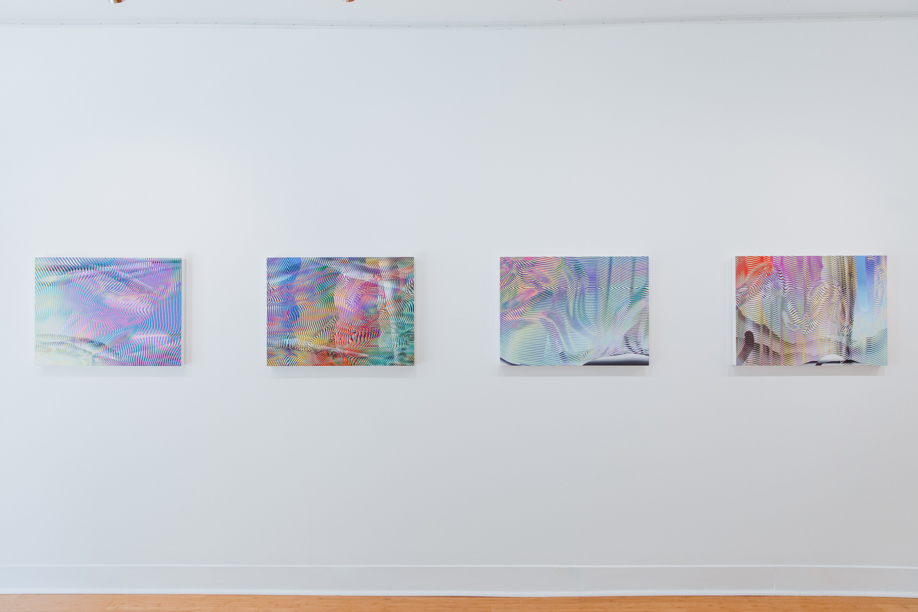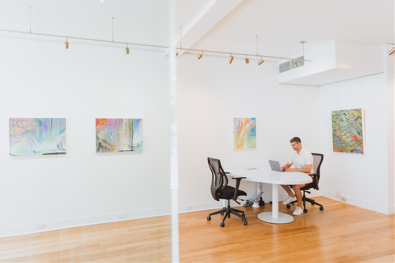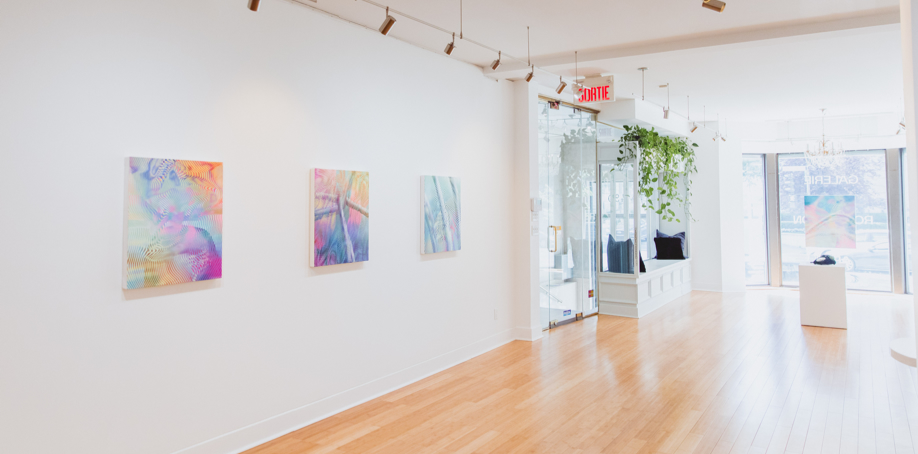Kyle Austin Dunn: Directions With No Endpoints
7/8/2020
GRA: How did you develop your technique?
KAD: My process is built on foundational interests in line (as both a concept and form of expression) and hard-edged abstraction (as a method to define form). I got to where I am now through extensive trial and error, experimentation, looking, thinking, and challenging myself to make difficult and ambitious work. The current techniques I'm employing are part of just one stage in what I expect will be a lifelong metamorphosis. I'm not content to stay within the parameters of one system for too long, but the recent approach I've been using that takes elaborate masking techniques to layer intricate sections of line work still has a lot of energizing terrain to explore. Right now I'm most inspired by behavioral psychology. Perceptual thinking, cognitive biases, rationality of judgement and decision-making- a lot of ideas that mostly get discussed within the context of economics, but that I'm more interested in looking at from a perspective of social conditioning and general awareness. It is definitely an introspective form of inspiration. Seeds for an idea will start as a vague concept that I have to pull and struggle with to give form to. This is probably why I rely on hard-edge and linear mark-making, it's an attempt to ground the intentions with definitive clarity.
GRA: You also built custom furniture. Can you tell us more about how both practices co-exist?
KAD: For many years, custom furniture was and continues to be a primary lifeline for me as an artist (i.e. day-job). Doing woodworking forces thinking with the more methodical part of my brain. I hone skills that get used directly in the making of my artwork (canvases, frames, crates, etc.), learn to-do's and what-not-to-do's of running a business, and experience what it feels like to create something functional out of a completely different medium. In my head, these practices exist only tangentially, though in reality there is probably more of a symbiosis happening where I rely on each one for different reasons.

GRA: How did your academic background shape your artistic practice?
KAD: I went to a public high school, university, and graduate school, but I think the influence had much less to do with the institutions themselves than the people I encountered along the way (which I believe is the point). I consider myself very lucky to have worked with dedicated/talented teachers AND peers every step of the way from my time as a senior in high school through each year of undergrad and grad school. I always knew these environments were bubbles and a lot of the time I was actually in school, yearned for more real-life experience, but I appreciate the opportunities I had to experiment and learn from failure now more than ever.

GRA: You’ve said in previous interviews that your bright colour palette was inspired from growing up in Florida. Can you expand on your choices of colour?
KAD: My Florida upbringing could be the source of certain tendencies, or I could have been regurgitating what a lot of other people have told me directly and theorized based on their own associations with Florida advertising and early 90's aesthetics. To be honest, I don't care too much about the origins of my own colour taste, as I think it's evolved a lot over the years and I've come to embrace colour choice as a means to elicit an emotional response more than as a byproduct of the environment I grew up in.
GRA: If you were standing beside someone as they were looking at one of your pieces - what are the details that would you bring to their attention?
KAD: Someone viewing my work in person has the ability to experience how their own movement and body positioning relative to the work can change what it looks like significantly. Viewed from the side or from far away, eyes will see subtle forms and color shifts that aren't visible in a frontal, close-up view. This participatory experience is hugely important.
GRA: Do you prefer to work with music, podcast, audio book or silence?
KAD: I prefer working in dead silence or with instrumental music in the background. Audio books, podcasts, and songs with lyrics are usually too distracting, and for me quietude is such a calming luxury.

GRA: Tell us about your choice of title “Directions with No Endpoints.”
KAD: "Directions with No Endpoints" is a show about choosing paths and maneuvering towards undefined outcomes. A major intention I have for the work, conceptually and formally, is movement. I want to encourage eyes, bodies, brains, and psyches to be in motion without relying on a goal or desired result as the guide. My reason for the title has to do with feelings of anxiety formed by a lack of control that I think society experiences collectively- with the most pronounced and difficult consequence being a state of paralysis. This is my response and counter to that effect. It is also a continuation of ideas I have been exploring for a few years that deal with and question the cyclical nature of things. The word "direction" has somewhat contradictory definitions, among them being "the course along which someone or something moves" and also "the course taken in order to reach a destination." Framing the idea of destinations, outcomes, goals etc. as "endpoints" is a way to examine these common objectives from a different perspective. I like to create titles that use words with a higher multitude of meanings. To me, the more definitions a word has, the more potential for conflicting meanings depending on context, which provides a satisfying illustration of the limitations of language for communication.

